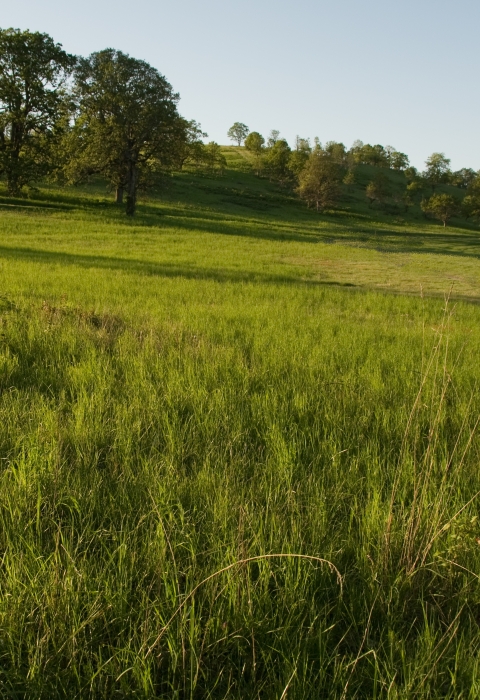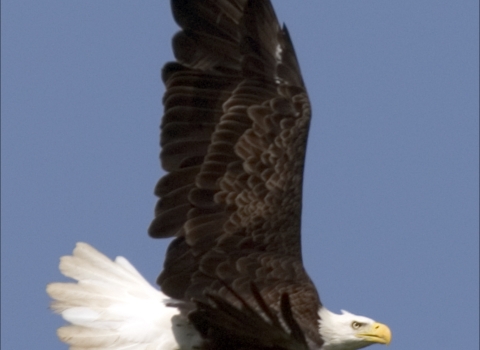In Oregon, it rains. A lot. Especially in the Willamette Valley, the green, beating heart of the state. Accessible year-round trails for those that like to hike can be hard to find. At William L. Finley National Wildlife Refuge just south of Corvallis, the Woodpecker Loop Trail now offers opportunity for hikers of all abilities to enjoy nature on their terms - even in the rain.
“This project was a joy to design and build. It provides an improved surface and easier slope for all our visitors and upgraded the accessibility of our most popular trail. It is an ideal addition to our trail system here at Finley,” said Eddy Pausch, deputy project leader for the Willamette Valley National Wildlife Refuge Complex.
This $357,000 deferred maintenance project, made possible with support from the Great American Outdoors Act Great American Outdoors Act
This landmark conservation law, enacted in 2020, authorizes the use of up to $1.9 billion a year in energy development revenues for five years for needed maintenance to facilities and infrastructure in our wildlife refuges, national parks, forests, recreation areas and American Indian schools.
Learn more about Great American Outdoors Act , improved access for visitors to the refuge. It replaced the deteriorating wood bridges and boardwalks, improved the gravel surfaces and made the first quarter-mile of the trail accessible in accordance with Americans with Disabilities Act and Architectural Barriers Act standards.
The improved 1.25-mile loop is a gentle walking trail and allows visitors the chance to experience a variety of habitats including oak woodland, rare oak savanna, a seasonal pond, and a Douglas fir dominated forest. There is also an exceptional view of the valley and Cascade Range at the overlook pavilion a fourth of the way through the loop trail. Throughout the trail there are interpretive signs that provide information about the animals and plant species you might see while hiking.
The GAOA project also added an ADA-accessible vault toilet, and the parking area was regraded, making access to the trail easier for everyone. Having a nearby, accessible bathroom can make the difference between being able to participate in an outdoor activity and staying home for many people, including families. And that’s part of the purpose of GAOA – to make it easier for folks of all abilities to get out on their public lands.
The Great American Outdoors Act is part of the America the Beautiful initiative, which is a decade-long campaign to conserve, connect and restore 30% of our lands and waters by 2030. The effort aims to support locally led and voluntary conservation work across public, private and Tribal lands and waters. This initiative will also create jobs and strengthen the economy’s foundation, tackle the climate and nature crises and address inequitable access to the outdoors. The GAOA provided funding for the U.S. Fish and Wildlife Service to hire experts in heavy equipment operation, machinery and maintenance – essential positions in any team implementing habitat modification and management plans. These experts support refuges across the country. They can also act as a strike team, traveling to refuges that need help on projects like the trail restoration at Finley.
This particular project was years in the planning, waiting for the funding and staffing to complete the needed updates. With the funding in place and Service employees with expertise in construction and heavy equipment operation, the refuge was able to complete the project in two and half months. The project crew came from across the country to help – from the Willamette Valley all the way to Kansas and Oklahoma.
Together, they removed the old bridges and walkways, replacing them with two new bridges and three sections of raised walkway, including 370 feet of raised decking, all with a new non-slip grating surface to increase trail safety and accessibility – especially in the rain! Improving accessibility despite the rainy weather was a key part of the trail improvements, and seven culverts were added to the trail to redirect rain runoff away from the trail. This improves drainage in the area and will make the trail less muddy. Additionally, parts of the trail were relocated, and a series of switchbacks were added to make the trail less steep.
The educational elements have also been completed - a new interpretive kiosk was built, and new signage and bilingual way points were installed as a part of the refuge’s Discovery Trail – a bilingual education program for families, schools and others. These new signs, in English and Spanish, guide visitors through the habitats, plants and wildlife they will encounter throughout the trail.
Projects like this are meaningful for the community but are also important to those working on them. Ernie Lowery, a heavy equipment operator at the refuge was the project lead. His favorite part of the project is the initial trail improvement from the parking area to the observation pavilion, which is now ADA and ABA compliant. There are two other accessible trails out to observation blinds on the refuge, Homer Campbell Boardwalk Trail and McFadden's Marsh Observation Blind Trail. Meaning that for persons with limited mobility, a large part of the trail system is now accessible!
Visiting the 5,325 aces of the William L. Finley National Wildlife Refuge is a great way to see what the Willamette Valley once looked like before the growing suburbs, widespread agriculture, and even settlers - when the Kalapuya people were stewards of the land. A large Roosevelt elk herd can be seen roaming the refuge, alongside migrating waterfowl and other birds, and resident native species such as acorn woodpeckers and the endangered Kincaid’s lupine.
The refuge was originally established in 1964 to provide a safe place for dusky Canada geese to spend the winter, which were at risk.Protected places like this refuge have played a huge role in preventing the species decline and need for listing under the Endangered Species Act. Today, the population of dusky Canada geese winters almost exclusively in the Willamette Valley, and the refuge works toward recovering healthy populations of six threatened and endangered species that rely on the refuge. The refuge is open every day from dawn to dusk - and is always free. Rain or shine – head on out to the refuge to enjoy nature on your terms.
*Author’s note: The GAOA funded crew that built the new trail included: Charles Glison, Engineering and Equipment Operator, William L. Finley NWR; Aidan Frye, Maintenance Mechanic, Baskett Slough NWR; Alex Escalante, EEO, and Shawn Garrett and Guthrie Ziebarth, Maintenance Workers, Wichita Mountains NWR; and Matt Leisure, EEO, Marias des Cygnes. In addition to the GAOA funded crew, local staff that worked on the project included: Ernie Lowry, EEO, and Joe Barker, EEO, William L. Finley National Wildlife Refuge; Jeremy Depiero, EEO, Baskett Slough NWR.




